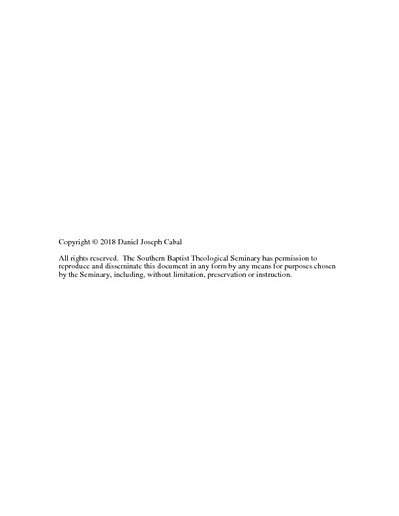| dc.contributor.advisor | Coppenger, Mark T. | |
| dc.contributor.author | Cabal, Daniel Joseph | |
| dc.date.accessioned | 2019-06-05T17:53:30Z | |
| dc.date.available | 2019-06-05T17:53:30Z | |
| dc.date.issued | 2018-11-16 | |
| dc.identifier.uri | http://hdl.handle.net/10392/5811 | |
| dc.description.abstract | Leo Tolstoy’s aesthetic theory in What is Art? defines art as the transmission of emotion through the creation of an object. Awareness of Tolstoy’s history and beliefs extends a more generous understanding to some of his controversial evaluations of famous artworks, but remaining problems with his theory require substantial enough changes to result in a neo-Tolstoyan aesthetic. Although kitsch proves difficult to define and the variety of existing definitions are examined, Clement Greenberg’s understanding of kitsch particularly challenges Tolstoy’s aesthetic through denouncing features of art which Tolstoy celebrates. A conception of art grounded in a biblical ethics of emotion is presented that synthesizes these competing viewpoints. The resulting synthesis offers clarification on the essence of kitsch and suggestions on how to evaluate the worth of artworks. | en_US |
| dc.subject.lcsh | Tolstoy, Leo, graf, 1828-1910 | en_US |
| dc.subject.lcsh | Aesthetics--Religious aspects | en_US |
| dc.subject.lcsh | Art and religion | en_US |
| dc.title | A Neo-Tolstoyan Response to Kitsch | en_US |
| dc.type | Electronic dissertation | en_US |
| dc.type | Text | en_US |
| dc.contributor.committee | Parker, James A. | |
| dc.contributor.committee | Crookshank, Esther R. | |
| dc.contributor.committee | Blount, Douglas K. | |
| dc.type.qualificationname | Ph.D. | en_US |
| dc.publisher.institution | Southern Baptist Theological Seminary | en_US |
| dc.publisher.department | School of Theology | |

